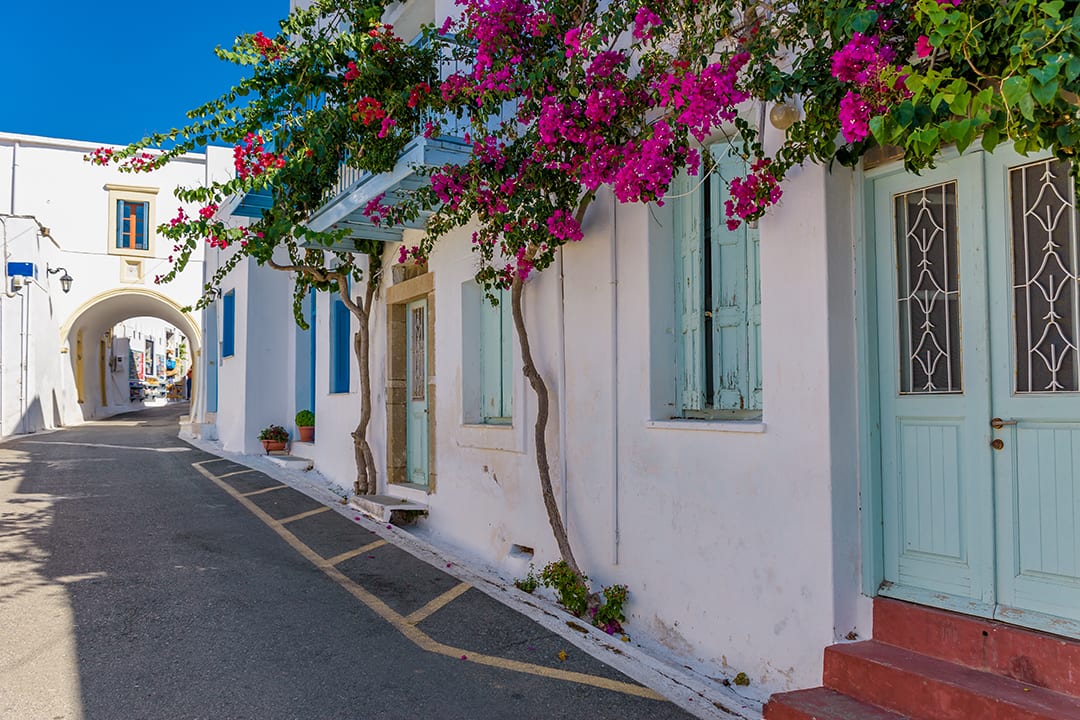
All you need to know about Kythira island!
Tucked below the Peloponnese’s coastline is the secluded island of Kythira. It is actually one of the Ionian islands however, it is so far from it’s Ionian family that this enchanting island has remained off the tourist radar and continues to be an untouched haven of natural beauty and calm.
Kythira boasts beautiful beaches, quaint villages and a wealth of natural sights and impressive architectural wonders.
Welcome to Kythira!
Beaches
The majority of Kythira’s beaches possess deep glassy waters offering the perfect conditions for both swimming and snorkeling, whilst the surrounding landscapes and beautiful bays create an environment perfect for relaxation.
Kapsali: The popular beach of Kapsali consists of two blonde bays with an impressive backdrop of mountainous terrain. The half sand, half pebbled beaches are lined with restaurants, cafes, shops and other tourist facilities; creating a vibrant cosmopolitan vibe.
Platia Ammos: One of our favourite places to relax is the beach of Platia Ammos. Due to its location it is very rarely frequented and therefore offers space and solitude. It’s deep blue waters are fantastic for swimming and it’s rocky coastline great for snorkeling. The locals in the area offer late afternoon volleyball games to those that wish to join and family-run cantinas and tavernas provide traditional snacks with a warm hearted service. This authentic beach is a great way to dive into local life and enjoy the tranquil bay.
Kaladi: This marvelous beach is found 15km of Chora and consists of a beautiful pebbled bay engulfed by a rugged landscape. It’s rocky terrain provides underwater caves and impressive rock formations that attract both locals and tourists that enjoy diving from formidable heights. There are no tourist facilities in the area however, this is still a popular beach in high season due to its spectacular natural beauty.
Chalkos: The small idyllic cove of Chalkos is a popular hotspot and is located 8km southeast of Chora. It boasts a beautiful surrounding landscape of verdant cliffs and pretty foliage that create a charming atmosphere. It’s one of the most frequented beaches on the island due to its turquoise waters, vast pebbled beach and cool breeze. There is a beachside canteen that sells cold drinks and snacks all day.
Avlemonas: Avlemonas town is a popular fishing village with picturesque scenery and a cosmopolitan ambience. It’s beach is actually more of a collection of stunning coves that the locals refer to as ‘natural swimming pools’. The main cove is a rocky settlement where visitors can sunbath on stone ledges and enjoy an amazing swimming experience. The cove’s dazzling waters and surrounding exotic vegetation create a very tropical vibe. There are some fantastic tavernas in the area providing delicious traditional meals.
Sightseeing
The island of Kythira is rich in both history and mythological wonder and therefore offers a large variety of remarkable landmarks; medevial castles, caves, waterfalls, monasteries and museums to name a few.
The Neraida waterfalls: Deep within the scenic village of Milopotamos are the stunning Neraida waterfalls. Tropical greenery, rustic bridges, narrow streams and natural swimming pools together create this mystical environment. The 20 meter waterfall collects in a large pond ideal for swimming and other rock formations offer the adventurous visitors places to jump and dive from. Also within the area there are some abandoned watermills that add an enchanting air to the area.
Chora castle: This Venetian castle is one of the most distinctive landmarks on the island. Built between the 12th and 13th century, this grand structure was strategically placed with a great observation point of the Ionian, Aegean and Cretan seas; giving it the name ‘The Eye of Crete’. Within the castle walls there are four well preserved churches and surrounding the castle remains are old residencies and prisons. Spectacular views await each visitor of this landmark!
Cave of Agia Sofia: The Cave of Agia Sofia is located 60 meters above sea level and 20 meters deep in the ground, close to the villages of Kapsali and Mylopotamos. Inside the cave are beautiful formations of stalactites and stalagmites, holy icons, colourful frescoes and additionally a small chapel dedicated to Saint Sofia. It is said that her body was found within the caves by residents of Mylopotamos who then built the small chapel in her honour. Excavations of the cave have also indicated that it was used by Christian cults. Aswell as its religious importance, mythology suggests that Paris and Helen of Troy were hidden within the cave after leaving ancient Sparta.
Caste of Mylopotamos (Kato Chora): This castle was part of a medieval settlement that was inhabited until the late 1950’s. Also known as the Castle of Kato Chora, the construction was built by the Venetians in 1565 and was predominantly used to protect the island and its inhabitants from pirate raids and enemy attacks. It was strategically located to watch over the west coast of the island and now provides amazing views of the Mediterranean Sea. Inside the castle there are the remains of nine churches dating back to the 16th and 17th centuries.
The Castle of Paleochora: In the abandoned town of Paleochora lies the ruins of Paleochora Castle. Built within a deep canyon in the 12th century, this castle was naturally camouflaged by nature and protected by the surrounding rugged terrain. The town of Paleochora used to be the capital of the island during the Byzantine period, however in 1537 the town was completely destroyed by the infamous pirate Barbarossa. The village was never inhabited again as it was believed to bring bad fortune. To this day this village remains a ghost town.
Local cuisine
The majority of the island’s restaurants are family-run tavernas that boast authenticity and honesty. These tavernas usually offer seasonal menus designed to reflect both the vibrancy of the local produce and the heritage of traditional Greek cooking. One particular taverna offering spectacular traditional dishes is Platanos in the village square of Mylopotamos. On our last visit to Platanos we ate: traditional rabbit stew, stuffed zucchini flowers and fried Graveria; all Greek specialities using the island’s local produce. We highly recommend this charming100 year old restaurant!
Tavernas specializing in seafood dishes can be found in the seaside villages of Kapsali, Diakofti, Agios Pelagia and Avlemonas and if you are looking for a good coffee and something sweet then head to the little bakery in Karavas, where the selection of flavoured rusks are bountiful and the owners are passionate about their work.
Be sure to try Fatourada, a liquor made of: tsipouro, citrus fruits and cinnamon. It has been produced on Kythira island since the 14th century and still remains a popular beverage amongst the locals.
Events and festivals
Due to the size and seclusion of the island, there are limited organised events on the island. Kythira netherless provides the perfect environment for total relaxation and a pleasant holiday. It’s stunning beaches and crystalline waters are great for swimming, snorkeling and scuba diving and it’s unique landscapes and historical sites offer some fantastic hiking routes. This is the perfect island to go off- grid, dive into a good book and catch up on rest.


